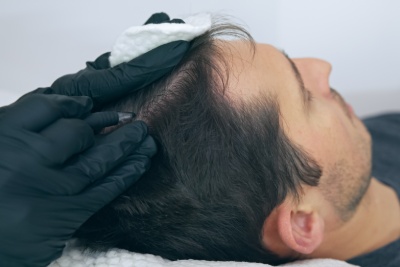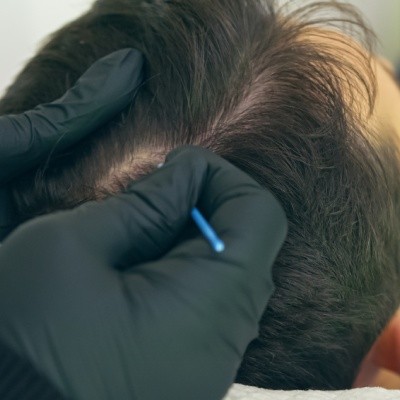Do you suffer from alopecia and want to camouflage it using hair tricopigmentation? However, are you wondering if there are any contraindications? Dermopigmentation Center informs you about the me...
How hair micropigmentation helps camouflage scars left by surgery?
Scars on the scalp may remain visible after a hair transplant. The Dermopigmentation Center team explains what the hair tricopigmentation method consists of to camouflage these scars on the scalp in Marbella, Spain and Namur, Belgium.
Conceal scars left by a hair transplant

Hair transplantation is a procedure allowing hair to be implanted on areas of a scalp affected by baldness. There are several methods, including the following:
- Follicular unit transplantation (F.U.T.): This procedure aims to take a strip of hair to transplant it to a bald area. The disadvantages of this technique are, on the one hand, that scars remain visible. On the other hand, that the skull then consists of grafted parts and parts which continue to gradually become bald.
- Follicular unit extraction (F.U.E.): This method’s purpose is to extract hair follicles one by one and re-implant them in balding areas. The disadvantages of this method are the hundreds of microscopic scars that are created and weaken the scalp as a whole.
How do you hide a scar on the scalp using hair micropigmentation?
To camouflage scars on the scalp, and even to optimize the results of a hair transplant, it is possible to opt for hair micropigmentation to create a hyper-realistic optical illusion.
Tricopigmentation for a scar
First of all, it is possible to hide the scars left by hair transplants with a micropigmentation procedure. This involves injecting quality bioresorbable pigments into the scalp at the level of the scar to be concealed, to blend it naturally with ideal shades depending on the color of the skin tone and hair.
Note that it is appropriate to wait for the scar in question to stabilize for a period of approximately 6 months after the transplant before being able to move onto the stage of micropigmentation.
Micropigmentation for a shaved head or densification effect
After masking the scars present on the scalp, it is possible to continue this dermo-aesthetic approach in two ways:
- Hair micropigmentation for a shaved head effect: After the F.U.T method, with a scalp which has continued to become bald, it is possible to choose to cut the remaining hair very closely. Then the practitioner can proceed to micropigmentation to have a hyper-realistic shaved head effect. This helps to standardize the appearance of the scalp while restructuring facial features.
- Hair micropigmentation to densify the hair: After the F.U.E. method, it is possible to do a micropigmentation procedure to densify the hair. Injecting pigments visually strengthens existing hair and evens out the appearance of the scalp. However, this technique cannot be done on excessively or completely bald areas because it will not offer the expected natural result.
Do you have questions about this hair tricopigmentation method practiced in Spain or Belgium?
The Dermopigmentation Center team welcomes you in their centers in Marbella, in the Malaga province in Spain and Erpent, in the Namur province in Belgium. We use all our expertise to perform micropigmentation procedures to hide a scar. For any requests, contact us by telephone or via the online form.



 Partager ce contenu
Partager ce contenu 

